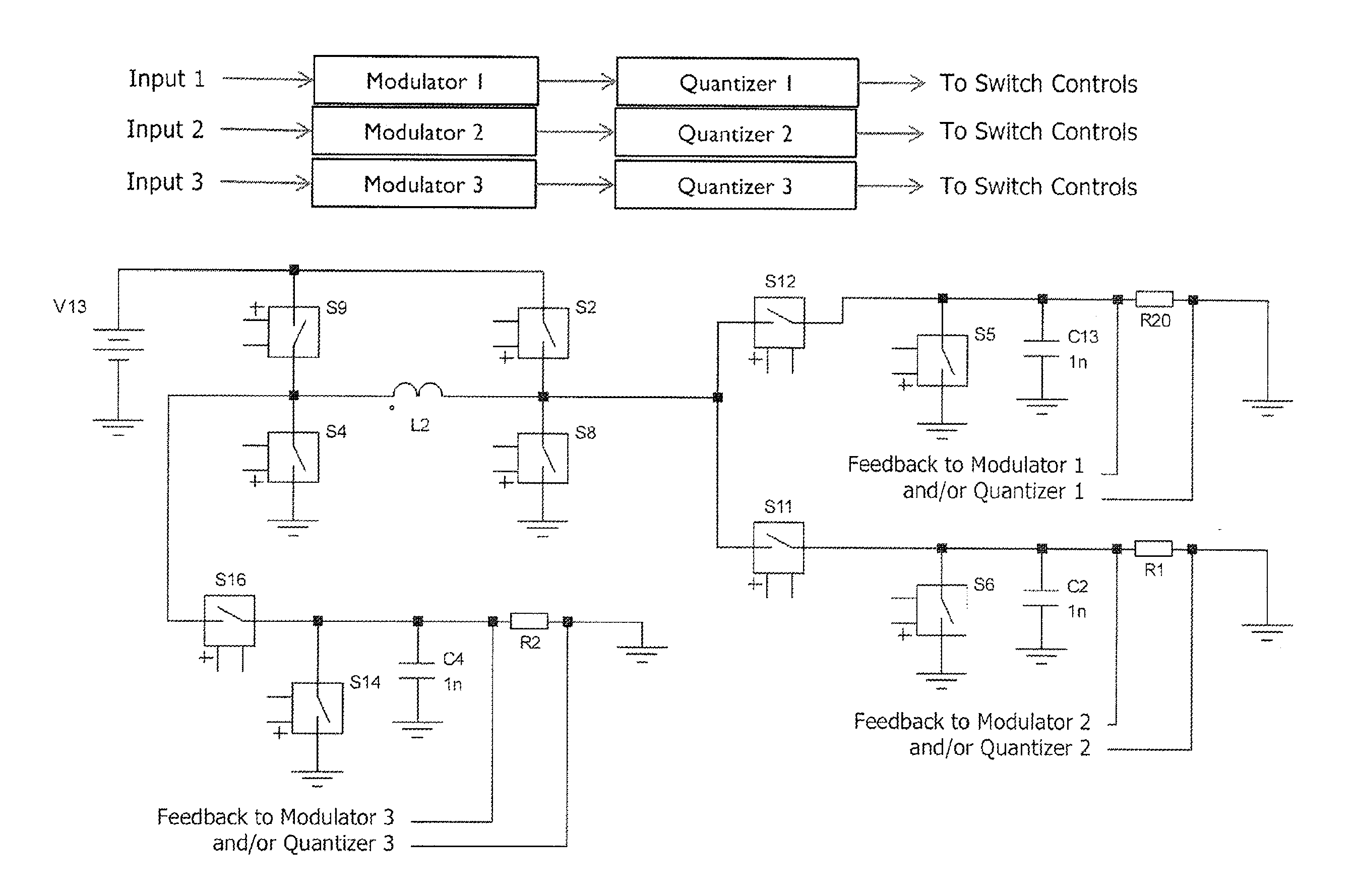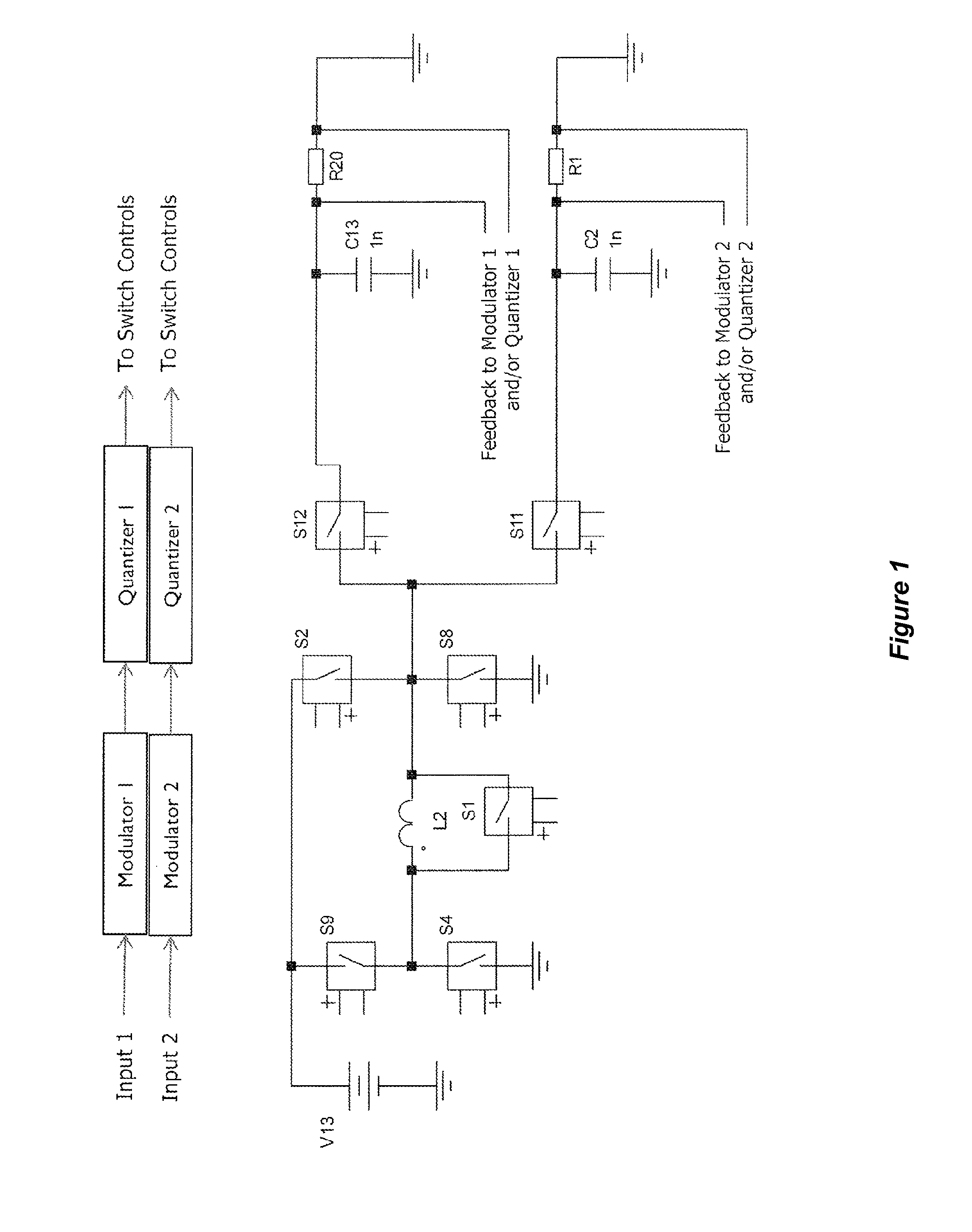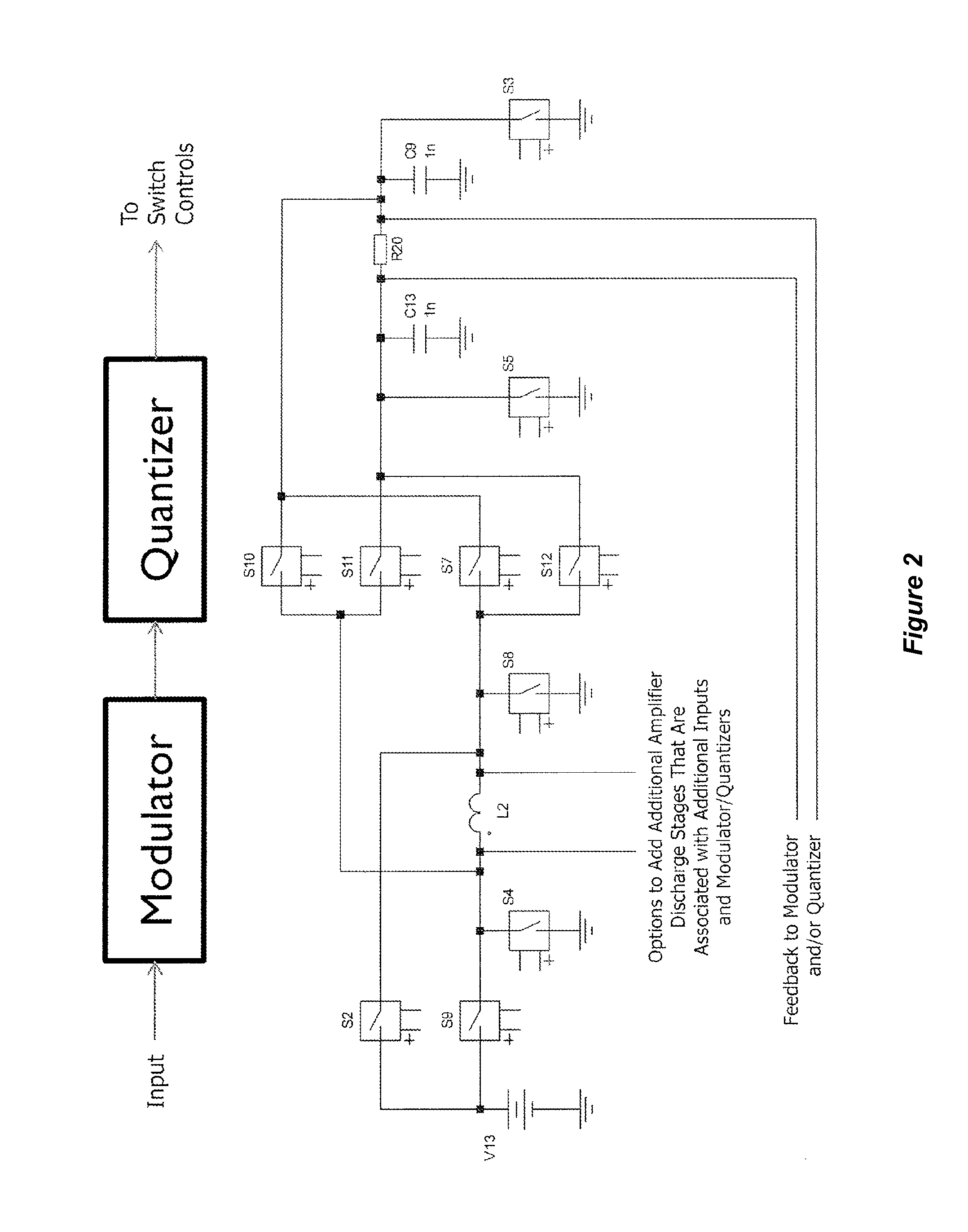Resource pooling amplifier
a technology of resource pooling and amplifiers, applied in the field of electromechanical power amplifiers, can solve the problems of high linearity and low cost structure, high power dissipation, and high cost of output inductors, and achieve low power dissipation
- Summary
- Abstract
- Description
- Claims
- Application Information
AI Technical Summary
Benefits of technology
Problems solved by technology
Method used
Image
Examples
example 1
Stereo High Efficiency Headphone Amplifiers Plus One Extra DC Supply
[0034]FIG. 3 show the power stage for a ground-centered stereo audio headphone amplifier with an extra DC supply. In this example, the amplifier charges the inductor and then discharges into load 1 (R20). Then it charges the inductor again and then discharges into load 2 (R1). Finally, it charges the inductor and discharges into load 3 (R2). Then this cycle repeats starting over back at load 1.
[0035]In this example, the charging is done by S9, S4, S2 and S8. These switches are shared between all of the outputs. The inductor can be charged in either polarity by either closing S8 and S9 or by closing S2 and S4.
[0036]Discharging depends on which load is being used. For R20, in this example, discharging is done by turning on S4 and either S7 or S12 with S5 and S3 respectively. For R20, in this example, discharging is done by turning on S4 and S12. For RI, in this example, discharging is done by turning on S4 and S11. Fo...
example 2
Bridged High Efficiency Amplifier Using One Inductor with Ability for Output Voltages to Exceed Supply Terminals (VCC and / or GND)
[0039]With this new art architecture, as implemented in Example 1, the inductor current can get quite high causing significant power dissipation in the amplifier. For example, even when operating in continuous boost mode, if the inductor is connected to the load 50% of the time, the average current can be approximately 2× the load current. If the inductor is cycled between many loads then the peak inductor currents can get quite high because the inductor is typically connected to the load for a small percentage of each cycle and the inductor is usually fully discharged in order to reduce crosstalk between channels. This is acceptable for loads with small output currents such as headphones but it is desirable to change this for high output power loads. Therefore, when alternating clock cycles are not being used to share the inductor with other channels as w...
example 3
Shared High Efficiency Bridged Amplifier with Either Above Headphones or Supply Rails for Class AB, Class G or Class H Headphones
[0049]In a cell phone, the high power amplifier and the headphone amplifier are rarely (if ever) used at the same time. The inductor can therefore be used for both purposes (both previous examples can share an inductor). If both are on, modulator stability may require that the high power speaker amplifier operate in a mode not using the inductor such as by adding an additional class AB amplifier.
[0050]Many new cellphones are adopting an architecture where the headphone is powered by added positive and negative supply voltages. The inductor can also be used to generate these rails (similar to first example but simply outputting fixed DC output voltages).
PUM
 Login to View More
Login to View More Abstract
Description
Claims
Application Information
 Login to View More
Login to View More - R&D
- Intellectual Property
- Life Sciences
- Materials
- Tech Scout
- Unparalleled Data Quality
- Higher Quality Content
- 60% Fewer Hallucinations
Browse by: Latest US Patents, China's latest patents, Technical Efficacy Thesaurus, Application Domain, Technology Topic, Popular Technical Reports.
© 2025 PatSnap. All rights reserved.Legal|Privacy policy|Modern Slavery Act Transparency Statement|Sitemap|About US| Contact US: help@patsnap.com



